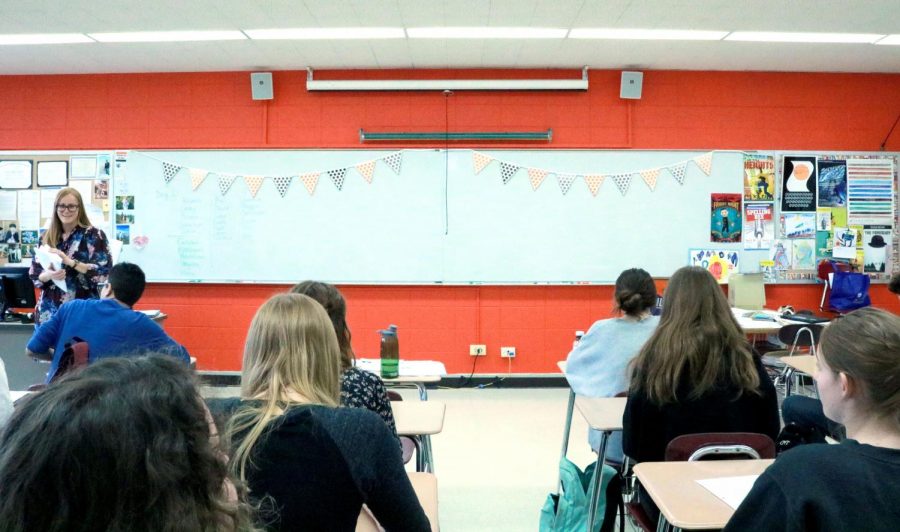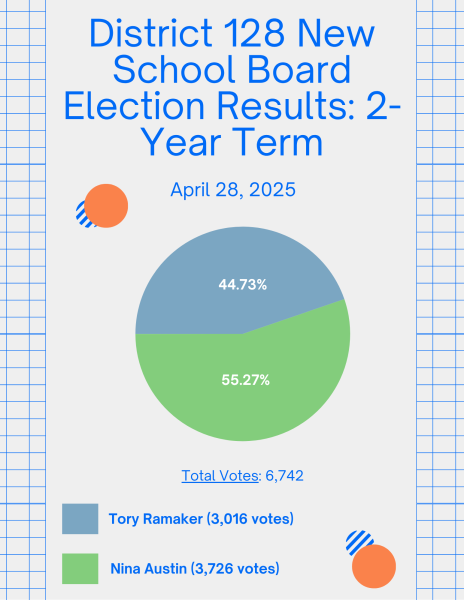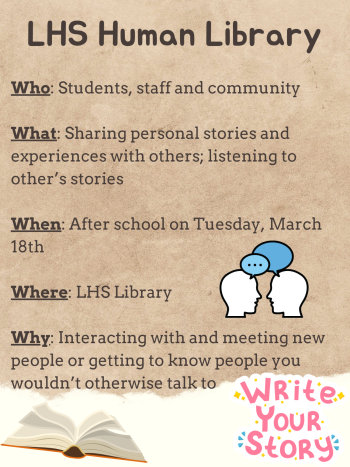Constructing innovative classrooms
Within this past school year, changes have started to appear around LHS to update it from a traditional high school to one more representative of a 21st-century learning space.
One of the first noticeable changes was an accent wall that was painted during the first week of February in English teacher Mrs. Karen LeMaistre’s classroom, room 256. The front wall was painted a bright orange, which boldly stands out from the other three traditional white walls. Both Mrs. LeMaistre and LHS principal Dr. Tom Koulentes said that the goal is to draw attention to the front of the room as well as to provide a welcoming and creative environment.
The LHS administration has done research on colors, partly referencing a book called “The Third Teacher,” written by an architect who specializes in school design, which had shown that orange has proven to be a color that makes people feel safe, creative and has a welcoming vibe to it.
Mrs. LeMaistre’s room was the first room to be painted as a trial run for that particular color.
“There were mixed reactions [among my students], but I would say overwhelmingly they like the idea of it, and a lot of them like the color,” said Mrs. LeMaistre.
One student in one of Mrs. LeMaistre’s classes, senior Lanie Storiz, expressed her opinion that “white was really nice,” although added that having a pop of color “does make the school seem slightly less than a prison, which is a bonus.”
However, this is not necessarily the final shade of orange. Within the coming weeks, a few more rooms will be painted with an accent wall of different shades of orange until a good hue that is generally well-received from student and staff feedback is found. Dr. Koulentes explained that eventually, every classroom at LHS will have an accent wall painted with the same hue of orange.
Dr. Koulentes expanded by saying that another change being implemented this school year will be the redesign of the computer science lab, room 122. It will be updated by adjusting the room and devices in it to make a more collaborative and innovative workspace that better suits today’s day and age.
Next school year, returning LHS students will notice that there will be even more redesigned classroom environments and resource centers. According to Dr. Koulentes, most of the planned redesign work will take place this summer during break while students are away. In the fall, they will return to an estimated 10-20 redesigned classrooms as well as a new air conditioning and heating unit on the second floor of the building, which will solve current temperature issues.
Dr. Koulentes elaborated, saying that the mantra school administration has is that “learning should define a space, the space shouldn’t drive the learning.” It’s expected that the new room layouts will be better-suited learning environments for students and staff alike.
Currently, the furniture in most classrooms is unmobile or difficult to move around. After the redesign, classrooms will be equipped with furniture that can be moved around with ease in order to best suit the learning environment, including chairs and tables on wheels, and different styles of tables.
Then, if a teacher or a student has an idea for something they want to execute in a classroom and need to switch some things around, the “space will facilitate that instead of hinder that,” Dr. Koulentes said.
Meanwhile, Oak Grove Elementary School in Green Oaks is another local school that has recently implemented a new innovative classroom setting for its students. In late December of 2017, health and PE teacher Miss Sara Kurtz was granted approval for the purchase of 10 bike desks for her classroom. These desks are the height of standing desks with attached seats and bike pedals underneath that the student can pedal on during class.
While these desks are suitable for every student, Miss Kurtz added that “the nice part is that [the bike desks] also help special [education] students who might need a little fidgeting, and it’s not distracting, and there’s a lot of benefits.”
She attributes the success of having these bikes to their appeal to students who learn kinesthetically, which means they learn through movement and physical activity rather than sitting still listening to a lecture. In addition to calming students who sometimes need to move around a little bit, Ms. Kurtz said the non-strenuous exercise has helped her students’ attention and behavior, and she has found they are more energized and ready to go for their next class.
These new classroom settings follow the trends of other area high schools that have already re-done their facilities to provide collaborative learning environments for their students. Dr. Koulentes added that the administration at LHS will continue to work with feedback as it carries out its plans to redesign the learning environment now as well as within the coming years.





![Mr. Abullh Ali, manager/assistant, helps open Queen Yemeni Coffee in downtown Libertyville at 606 North Milwaukee Ave. With the help of employees such as manager and LHS senior Yousef Taha, they are able to bring the Yemeni and Ethiopian culture to Libertyville by using their Queen spices, cinnamon and cardamom in their drinks such as Adani Chai, which is inspired by Sheda, the Queen of Yemen and Ethiopia. “The history of our coffee [is] a long history and we believe that Yemen and Ethiopia started the coffee and we are bringing something unique to the community,” Mr. Ali said.](https://www.lhsdoi.com/wp-content/uploads/2025/04/Photo-1-600x400.jpg)


